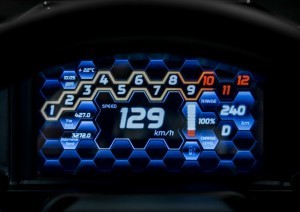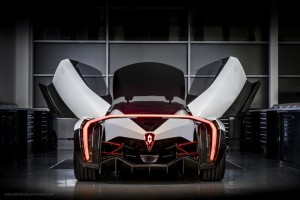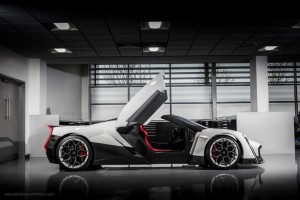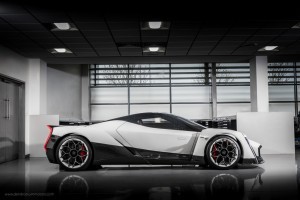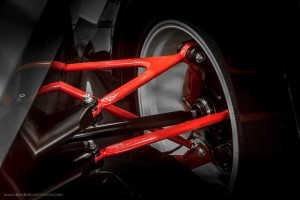Singapore’s Vanda Electrics has delivered on the promise it made in February last year, showing the Dendrobium electric supercar for the first time at this year’s Geneva Motor Show. And while it’s taken a step back from the space-age concept renders and astronomical performance figures we were given a year ago, it’s still a super-exotic looking machine.
It’s worth taking a look back at our original Dendrobium preview to see what we were expecting from this battery-powered beast. That ultra-flat roof was never going to make it into a real, drivable car. But the semi-open rear suspension has, as has the tapering tail complete with a new, wickedly lit rear spoiler.
The interior is absolutely brutal. The Dendrobium, named for a Singaporean orchid, is built around a carbon monocoque frame, and the cockpit mainly consists of bare, angular carbon with the odd bit of leather trim.
The driver’s seat is a bright red leather sports number with stitching designed to emulate muscle fibers, and it looks mercifully easy to get in and out of – at least, compared to some supercars – thanks to up-and-back opening suicide doors that open in concert with the roof tilting back, and a reasonably low side wall to get your legs over.
The dash, well, it looks a bit form over function to us, and I think the spread of hexagons may eventually get pretty annoying on the road. But hey, it looks cool for five seconds at a car show, and it’s an LED display that could look like just about anything by the time production rolls around.
Some of the specs Vanda originally started out with appear to have been walked back during its journey from the drawing board to a Geneva prototype. A top speed of 400 km/h (249 mph) has regressed to 320 km/h (199 mph), with a note saying “actual performance to be revised upon production.” A 2.6-second 0-100 km/h (0-62 mph) time has been nudged back to 2.7 seconds, and the promise of 4,000 Nm (2,950 lb-ft) of planet-crunching torque as well as 1,500 horsepower (1,119 kW) seems to have disappeared altogether.
Still, it will no doubt be fast and fun to drive, given the curb weight of 1,750 kg (3,858 lb), which has been the design goal all along. The powertrain sounds interesting, consisting of two inboard electric motors per axle, with a single-speed gearbox and differential at the front, as well as a multi-speed gearbox and differential at the rear, but that’s as much as we know.
As for batteries, power, range? No details have been given, but we’re going to go ahead and assume you can pretty much get from any point in Singapore to any other point and home again, given that the whole country is just 42 km (26.1 mi) North to South and 23 km (14.3 mi) across at its widest point.
Singapore’s first electric supercar – heck, its first supercar of any kind – should hit the road by 2020. That’s “if Vanda Electrics receives enough positive interest at the Geneva Motor Show,” with an initial run of 10 being the original plan.
Ask me anything
Explore related questions





